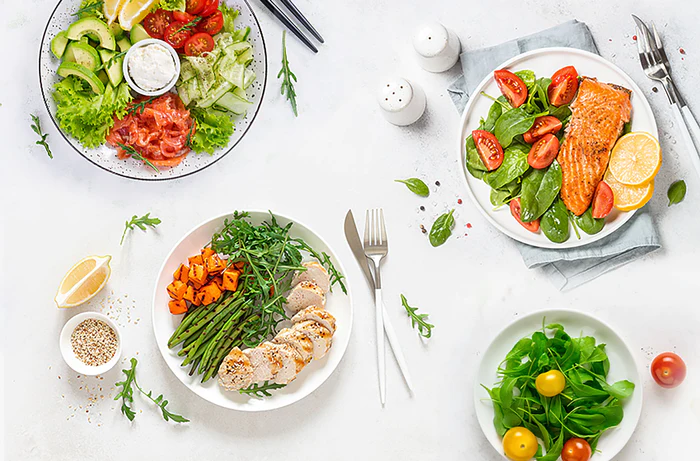Dr. Sears answers some of the top questions we receive about polyphenols and what makes MaquiRx unique.
What are Polyphenols?
Polyphenols are complex phytochemicals produced by plants to offer them protection against the sun's radiation and to help defend against injuries induced by microbes or bacteria. Just like polyphenols protect plants, they protect us in a similar way by acting as antioxidants to help combat inflammation and aid in supporting immunity through their activation of key genes. They also play a key role in gut health by helping to defend against bad bacteria while increasing the production of good bacteria.
What are the health benefits of consuming polyphenols?
Polyphenols should be considered essential nutrients since we know they function as activators of key gene transcription factors such as AMP-Kinase and support the following benefits:








What is responsible for all the benefits of polyphenols?
Polyphenols, at adequate nutritional intakes, support the activation of AMP-Kinase. Think of AMP-kinase like a genetic master switch for your metabolism. The greater its activity the longer your health span.
Which foods contain polyphenols?
The more colorful the plant, generally the higher the polyphenol content. This is why fruits, especially berries, and vegetables are good sources of polyphenols. Nonetheless, the levels of polyphenols occurring in fruits and vegetables is only between 0.1 and 0.2 percent by weight. Polyphenols are also found in cocoa, legumes, spices, and plant derived beverages such as tea, coffee and wine.
How much should people consume?
The answer depends on your personal goals. There are reported benefits that come with consuming anywhere between 500mg to 1,500mg of polyphenols per day. I recommend aiming for a minimum of 1,000mg per day for general wellness. To give a sense of what 1,000mg of polyphenols per day looks like, it could be approximately 5 ½ cups of broccoli, 1 ½ cups of blueberries, 2 ¼ cups of strawberries, or a combination of various fruits and vegetables. A good rule of thumb is that consuming 10 servings of vegetables and fruits per day will provide about 1,000mg of polyphenols per day.
Can you get enough polyphenols through your diet?
Only 1 out of every 10 adults in the U.S. meets the recommended intake of fruits and vegetables (5 servings per day) let alone the 10 servings per day that I recommend. Unfortunately, the fruits and vegetables that are usually consumed tend to be high in carbohydrates and low in polyphenols. Examples would include bananas and potatoes that can rapidly increase blood sugar levels leading to increased insulin levels. This is why supplementing with purified polyphenol extracts will have the least adverse effect on blood sugar levels.
Are some polyphenols better than others?
Yes. There are about 8,000 known polyphenols from a wide variety of sources. I consider the best dietary sources are from the blueberry family. The polyphenols in the blueberry family include: American blueberries, Russian blueberries (bilberries), and the Patagonia blueberry (maqui berries). Maqui berries have the highest concentration of a subclass of polyphenols called delphinidins which are water-soluble, meaning they are more likely to get into the blood and have been shown to help support improved blood sugar levels and reduced oxidative stress in clinical studies.
What is Maqui?
Maqui Berry is the richest antioxidant source in the world, having three times more antioxidants than blackberries, blueberries, strawberries and raspberries. Furthermore, maqui berries are the richest known source of delphinidins.
Why extracts over powder or juice?
Polyphenol extracts significantly increase the levels of polyphenols and reduce their carbohydrate content. Extracts are more concentrated and purified than simply a juice or a dry powder made from a juice. With extracts, the dry powder of the fruits is further extracted to increase the polyphenol content. For the most purified extracts (such as MaquiRx), the final concentration step involves a complex purification process that produces a refined extract that has about a 40% concentration of polyphenols by dry weight. Such extracts from maqui berry have 14 times more delphinidins compared to common blueberries. Maqui berry extracts have been shown to help activate AMP-Kinase which plays a key role in energy balance and metabolism. Activation of AMP-Kinase is the genetic master switch that controls appetite, blood sugar, lipid levels, reduction of inflammation, and repair of damaged tissue. Research has shown that delphinidins in purified maqui extracts can enter the blood more easily than other polyphenols, thus supporting activation of AMP kinase.
Is there a blood test to measure how many polyphenols I need?
There is no specific test to measure polyphenols in the blood since their lifetime in the body is short. That said, there is a standard test you can take to gauge whether you are taking enough. This is called hemoglobin A1c (HbA1c). HbA1c is a measure of the circulating levels of blood glucose over a 3-month period of time. If you can maintain a HbA1c level between 4.9-5.1% you are probably doing a good job getting enough polyphenols through diet and supplementation. If your HbA1c levels are higher, you probably need to add more polyphenols to your diet.
Dr. Sears recommends consuming 1000mg of polyphenols a day. Each maqui capsule supplies 120mg of polyphenols. Does that mean you need 8 capsules per day?
No. Ideally your polyphenol intake should come from a combination of both food and supplementation. It really depends on how much you think you can consume in your diet. The more fruits and vegetables you consume following the Zone Diet, the less polyphenol extracts you need.
When will people start seeing the benefits after they begin to supplement?
Generally within 30 days of using MaquiRx you’ll begin to notice benefits in the improvement of your metabolism.
Are there any side effects to supplementing with polyphenols?
No, as long as the polyphenols are highly purified such as MaquiRx and you can keep your HbA1c in the desired range of 4.9-5.1% there will not be any issues. At lower levels of HbA1c there is the possibility that the body may increase the secretion of cortisol to increase blood sugar levels. This is common for individuals following ketogenic diets.
How long do you have to take it?
Polyphenols should be considered essential nutrients that must be supplied by the diet for a lifetime.






Let Us Know What You Thought about this Post.
Put your Comment Below.